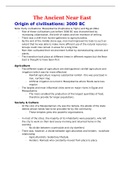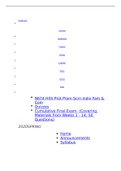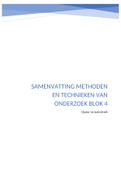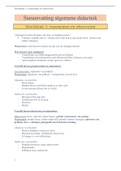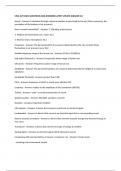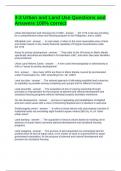Samenvatting
Summary An Introduction to the Ancient World: The Ancient New East
- Instelling
- Rijksuniversiteit Groningen (RuG)
In this document, you can find the first part of the book (The Ancient New East), which contains - Origin of Civilisations: 3000BC - The Third Millennium: 2000s BC - The First Millennium - Religion - Economy and Society - Government
[Meer zien]
